Summer, Sun, and Fun at the Seaside, 1970s Style
A view at the popular holiday resort Tučepi in present-day Croatia
A few months ago, I took you to Rabac in beautiful Istria, Croatia:
Southern Croatia’s equivalent of a small, very nice tourist destination during the Cold War is called Tučepi and it’s located a few kilometres south-east of Makarska. From Wikipedia we learn the following:
[Its] population [is] 1,819 (2021). It is a popular tourist destination thanks to its scenic coastline, its opportunities for sports and its excellent accommodation.
History
The settlement of Tučepi was first settled four thousand years ago by the Illyrians. Until the earthquake of 1962, the majority of its inhabitants were living in scattered hamlets like Gornji Tučepi, Podpeč, Čovići, Srida Sela, Šimići and Podstup at the lower foot of the mountain Biokovo and since the 18th century these towns have seen a gradual process of depopulation, as their inhabitants began moving down to Tučepi-Kraj, now a 4-km long resort.
Back in the Cold War, because Yugoslavia was not formally aligned with the Soviet Bloc (despite its Communist government), it was a popular tourist destination esp. for Austrians. This partially, albeit largely, explains why the Erich Sonntag Postcard Collection sports some vintage postcards from Tučepi, which I shall share with you below.
Without much further ado, please enjoy “a summer holiday, 1970s style”.
Multi-Image Postcards
The postcard above was mailed in 1981, and the one below was sent in 1977.
Note that the hotels in the top-right and bottom-left images are the same ones as the ones in the top-line in the first postcard. They also re-appear in the one below, mailed in 1979.
Note that the bottom-left image shows the Old Church of St George, which dates back to the early 14th century.
Summer, Sun, and Fun at the Seaside
Note that the blue boat in the foreground bore the name “Hajduk”, which is, according to Wikipedia, a reference to the following:
A hajduk (Hungarian: hajdúk, plural of hajdú) is a type of irregular infantry found in Central, Eastern, and parts of Southeast Europe from the late 16th to mid 19th centuries. They have reputations ranging from bandits to freedom fighters depending on time, place, and their enemies.
In the European lands of the Ottoman Empire, the term hajduk was used to describe bandits and brigands of the Balkans, while in Central Europe for the West Slavs, Hungarians, and Germans, and Eastern Europe for the Ukrainians, it was used to refer to outlaws who protected Christians against provocative actions by the Ottomans.
By the 17th century they were firmly established in the Ottoman Balkans, owing to increased taxes, Christian victories against the Ottomans, and a general decline in security. Hajduk bands predominantly numbered one hundred men each, with a firm hierarchy under one leader. They targeted Ottoman representatives and rich people, mainly rich Turks, for plunder or punishment to oppressive Ottomans, or revenge or a combination of all.
In Balkan folkloric tradition, the hajduk (hajduci or haiduci in the plural) is a romanticised hero figure who steals from, and leads his fighters into battle against, the Ottoman authorities. They are comparable to the English legendary Robin Hood and his merry men, who stole from the rich (who as in the case of the hajduk happened to also be foreign occupiers) and gave to the poor, while defying seemingly unjust laws and authority.
People that helped hajduks were called jataks. Jataks lived in villages and towns and provided food and shelter for hajduks. In return, hajduks would give them part of the loot.
The two postcards above and the one below were mailed between 1974-79.
I do think that the two guys in the motor boat are not “real” in the sense of they are in the image because of…tampering (a photographic montage).
Also, do note the absence of obese people.
And, finally, please enjoy this summer’s home stretch.

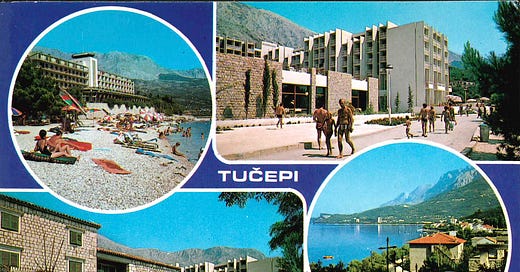




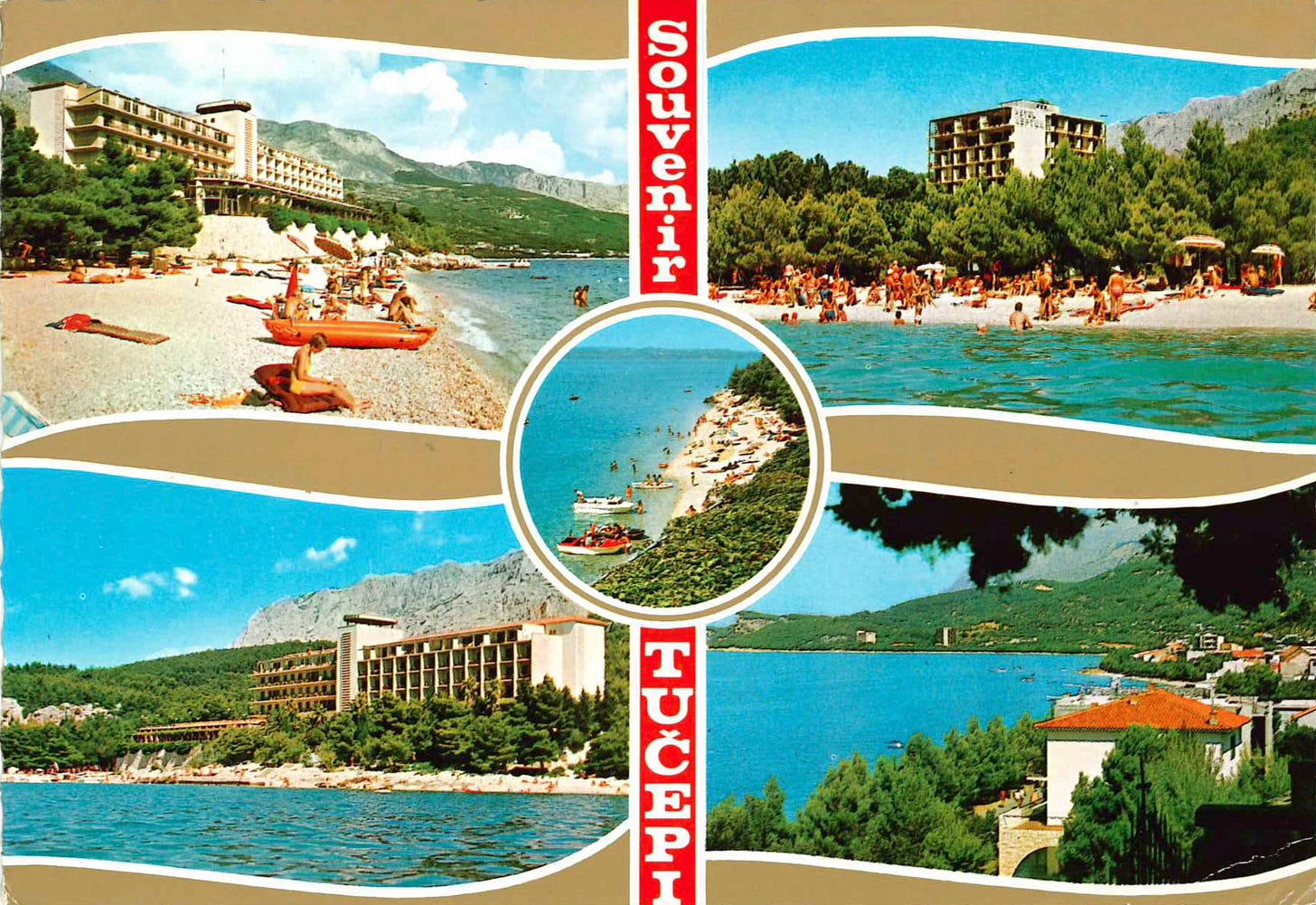
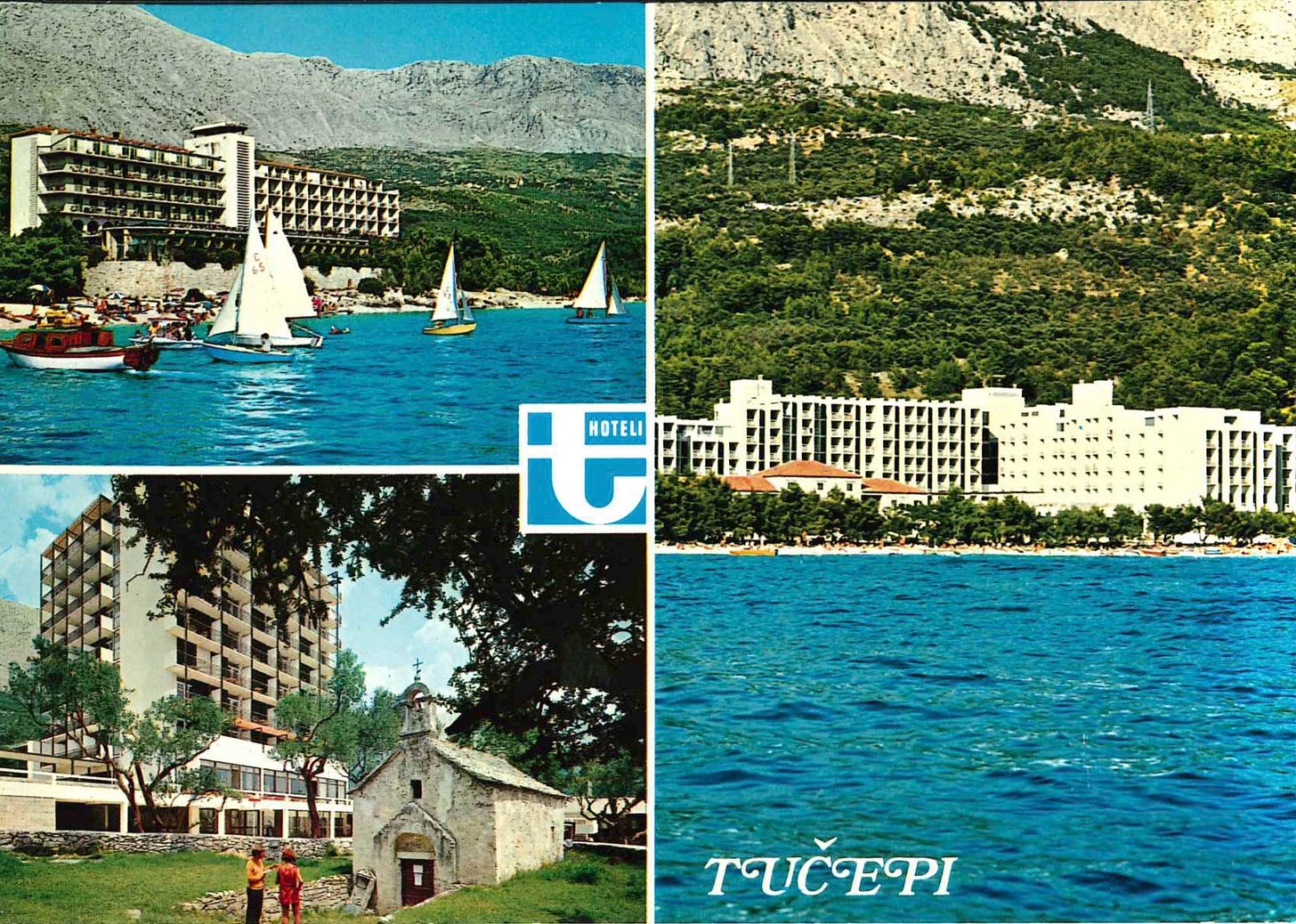
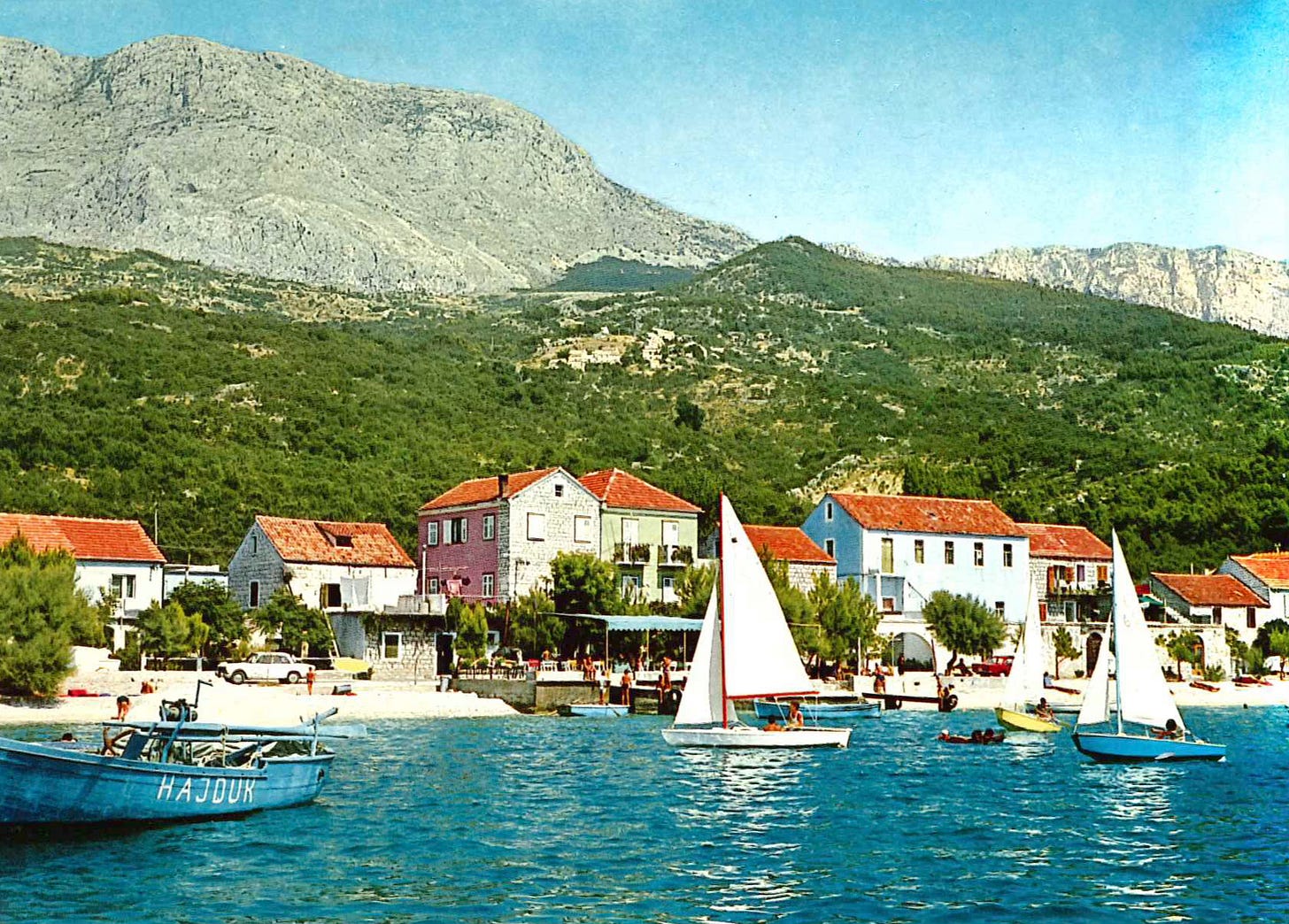

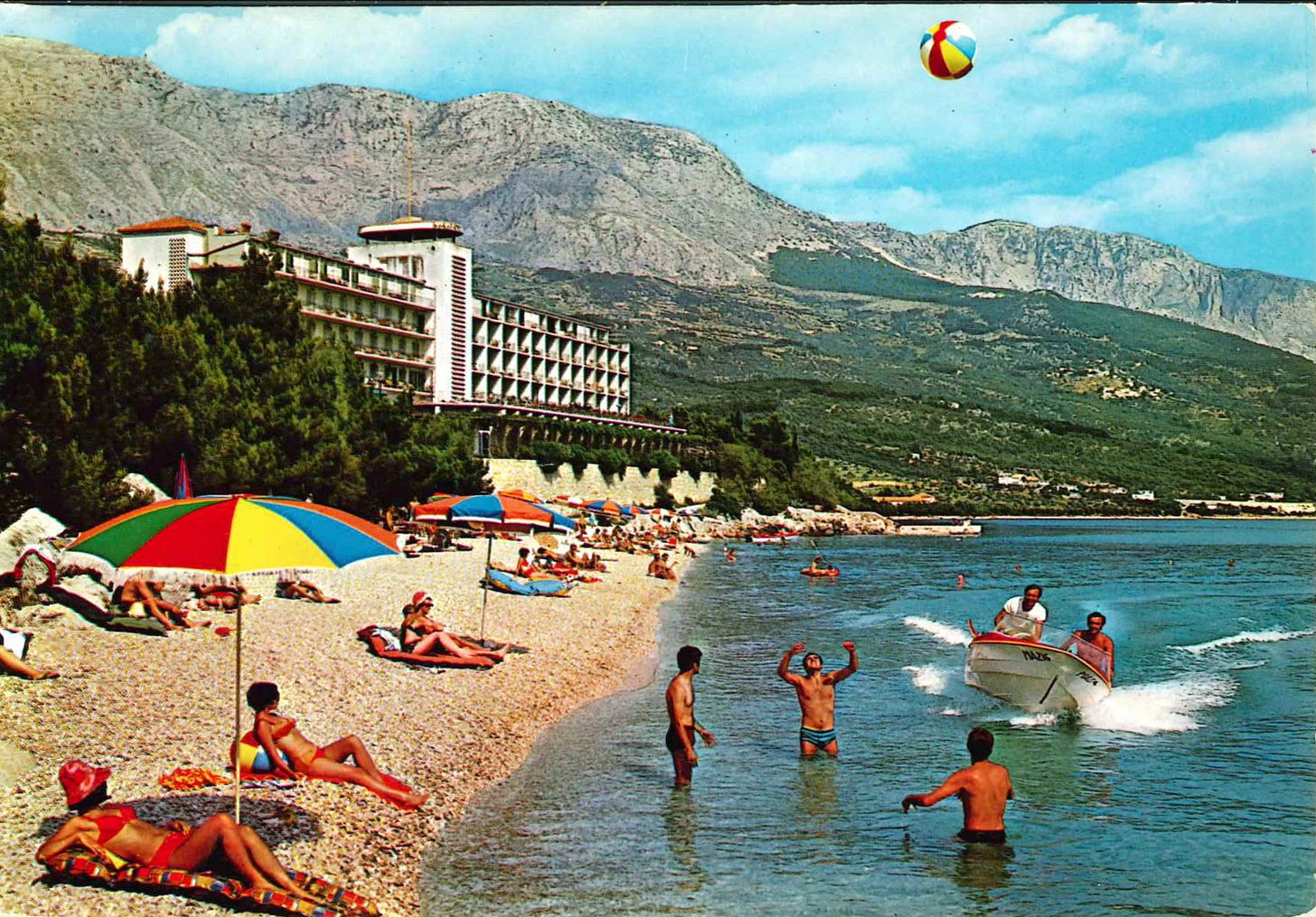
Love the old church